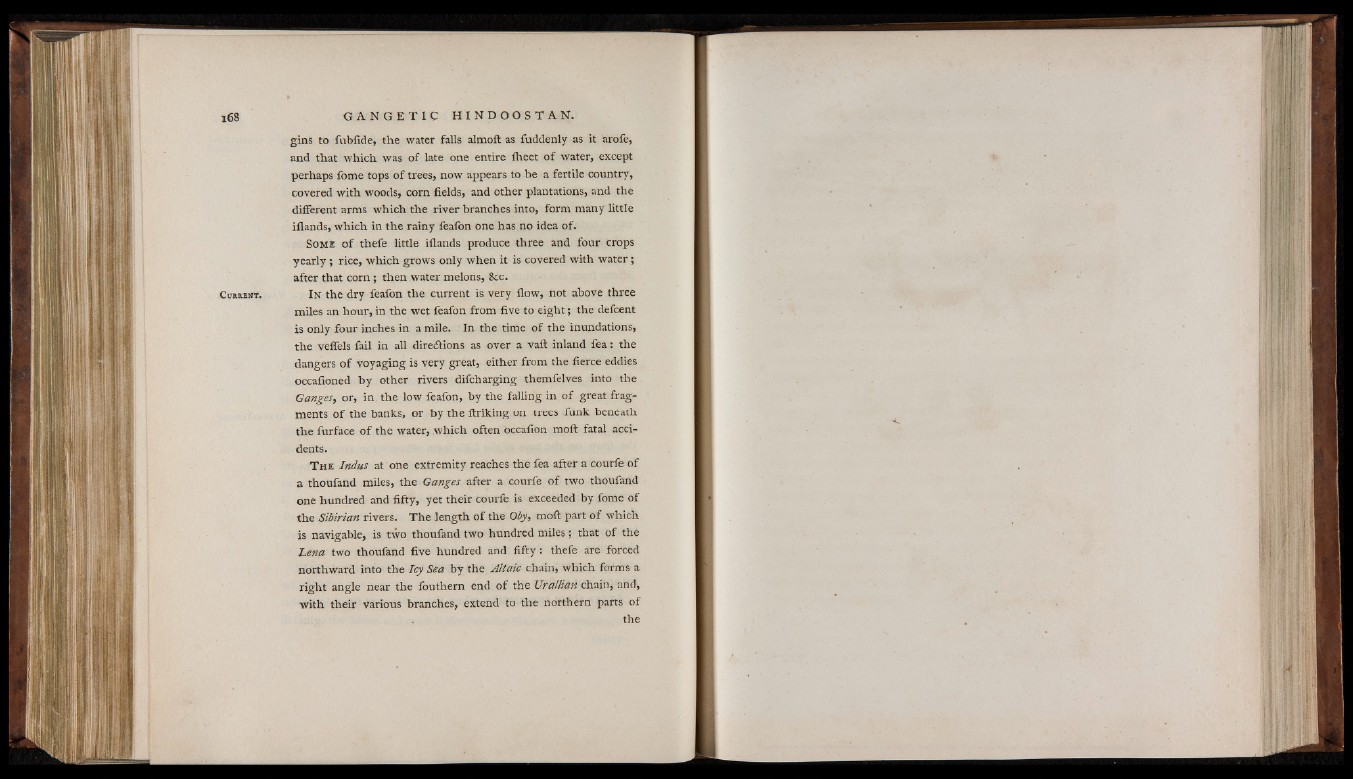
i68
C urrent.
gins to fubfide, the water falls almoft as fuddenly as it arofe,
and that which was of late one entire iheet of water, except
perhaps fome tops o f trees, now appears to be a fertile country,
covered with woods, corn fields, and other plantations, and the
different arms which the river branches into, form many little
iflands, which in the rainy feafon one has no idea of.
Some o f thefe little iflands produce three and four crops
yearly ; rice, which grows only when it is covered with w ater;
after that corn ; then water melons, fee.
In the dry feafon the current is very flow, not above three
miles an hour, in the wet feafon from five to eight; the defcent
is only four inches in a mile. In the time of the inundations,
the veffels fail in all directions as over a vaft inland fea : the
dangers o f voyaging is very great, either from the fierce eddies
occafioned hy other rivers difcharging themfelves into the
Ganges, or, in, the low feafon, hy the falling in of great fragments
of the banks, or by the ftriking on trees funk beneath
the furface o f the water, which often occafion moft fatal accidents.
T h e Indus at one extremity reaches the fea after a courfe of
a thoufand miles, the Ganges after a courfe of two thoufand
one hundred and fifty, yet their courfe is exceeded by fome of
the Sibirian rivers. The length of the Oby, moft part o f which
is navigable, is two thoufand two hundred miles; that of the
Lena two thoufand five hundred and fifty : thefe are forced
northward into the Icy Sea by the Altaic chain, which forms a
right angle near the fouthern end of the Urallian chain, and,
with their various branches, extend to the northern parts of
the